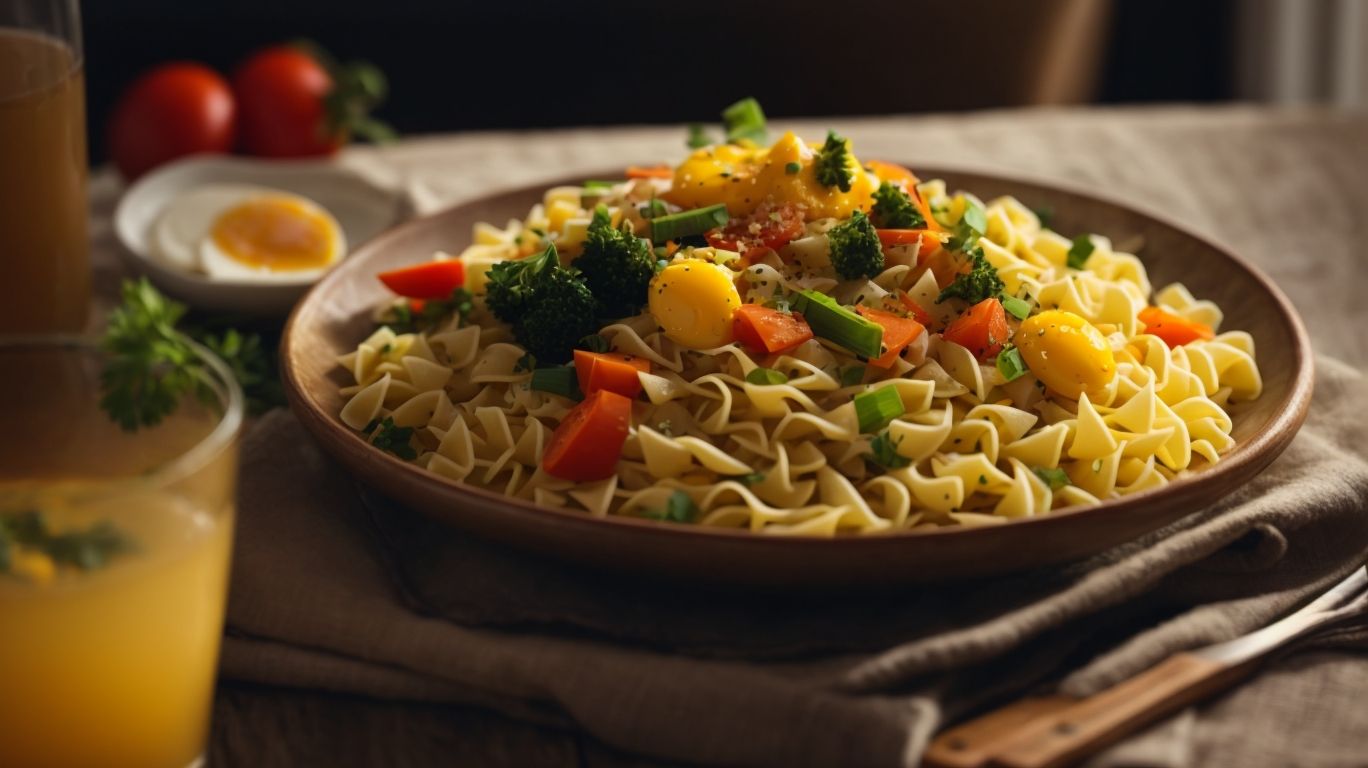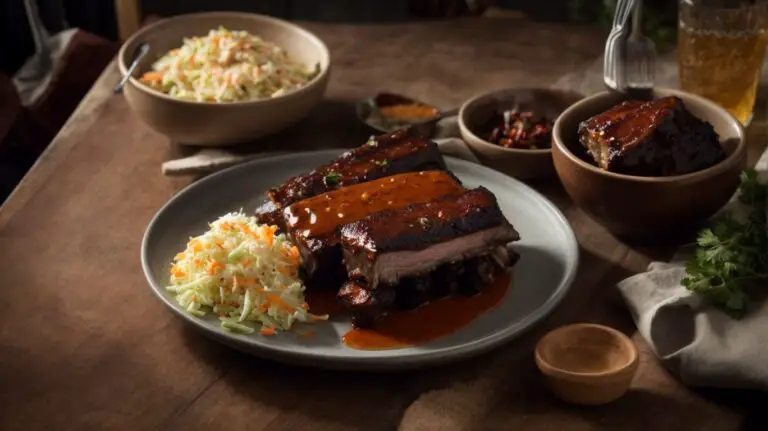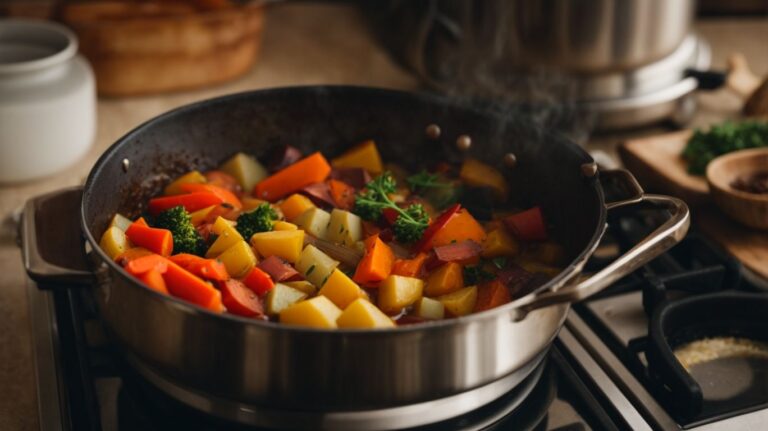How to Cook Egg Noodles?
Looking to add a delicious and versatile dish to your recipe repertoire?
Discover everything you need to know about egg noodles – from their ingredients and different types to the step-by-step process of cooking them perfectly. Whether you’re a novice in the kitchen or a seasoned chef, we’ve got you covered with tips and tricks for serving up the best egg noodle dishes.
Let’s get cooking!
Key Takeaways:
What Are Egg Noodles?
Egg Noodles are a type of pasta that contain eggs in addition to flour and water, giving them a rich flavor and unique texture.
This composition makes them firmer and more flavorful than regular pasta. The dough for egg noodles is typically made from wheat flour, eggs, and water, giving them a distinct yellow hue. Homemade egg noodles are a popular choice for many cooking enthusiasts, as they can be customized to varying thicknesses and shapes to suit different dishes.
From classic chicken noodle soup to savory beef stroganoff, egg noodles are versatile and can be used in a variety of dishes. They are particularly popular in Asian cuisine, where they are stir-fried, boiled, or added to soups.
What Are the Ingredients of Egg Noodles?
The Ingredients of Egg Noodles typically include flour, water, and eggs, combined to create a versatile dough for pasta making.
Flour serves as the foundation of egg noodles, providing the main structure and texture. It’s essential to choose the right type of flour, with many opting for all-purpose or semolina flour.
Water is used to bind the ingredients together and hydrate the flour. The amount of water added can impact the elasticity and consistency of the dough.
Eggs play a crucial role in adding richness, flavor, and color to the noodles. They contribute to the overall richness and help bind the ingredients together, resulting in a more flavorful pasta.
What Are the Different Types of Egg Noodles?
Egg Noodles come in various forms, including buttered noodles, popular in simple dishes, and stroganoff, a classic recipe featuring creamy sauces.
In terms of the world of egg noodles, there is a delightful variety to choose from, each offering a unique taste and texture experience. From the rich and comforting feel of traditional spaetzle found in European cuisine to the delicate and springy strands of Asian ramen, the options are endless. Store-bought egg noodles are convenient and readily available, making it easy to whip up a delicious meal in no time.
The beauty of egg noodles lies in their versatility; they can be used in soups, stir-fries, casseroles, or simply enjoyed on their own as a side dish. Their smooth texture and ability to soak up flavors make them a popular choice in many cuisines worldwide.
How to Cook Egg Noodles?
Cooking Egg Noodles involves boiling a pot of water, adding the noodles, and following specific instructions to achieve the desired texture and flavor.
To start, bring a large pot of water to a rolling boil and generously add salt to season the water. Remember, the water should taste like the sea to properly flavor the noodles. Once the water is rapidly boiling, gently add the egg noodles. Stir occasionally to prevent sticking, and cook them according to the package instructions for the prescribed cooking time. Test the noodles for doneness by fishing a strand out and tasting it; it should be tender but still have a slight firmness to it.
Step 1: Boil Water
The first step in cooking Egg Noodles is to bring a pot of water to a rolling boil, ensuring the noodles cook evenly and retain their shape.
For the perfect texture, it is crucial to have the water at a consistent boiling point, usually around 212°F (100°C). Use a pot that comfortably fits the noodles without overcrowding to avoid clumping. The dough of the noodles needs ample space to move freely for even cooking.
Boiling the water before adding the noodles ensures they cook at the right pace, preventing them from becoming mushy or undercooked. A rolling boil — when bubbles rapidly break the surface — indicates the ideal temperature for cooking, allowing the noodles to soften just right.
Step 2: Add Salt to the Water
Adding salt to the boiling water enhances the flavor of Egg Noodles and helps season the pasta as it cooks.
When you sprinkle that salt into the water, it not only infuses the noodles with a subtle salty taste but also helps to bring out the natural flavor of the pasta. This simple step can transform a basic dish into a savory delight by elevating the taste profile.
For those craving a bolder flavor, consider mixing in a bit of homemade butter with the cooked noodles to create a creamy and rich texture that complements the salt infusion.
To add a touch of freshness and color, garnish the dish with freshly chopped parsley for a vibrant and aromatic finish that not only enhances the presentation but also adds a burst of herbaceous flavor.
Step 3: Add Egg Noodles to the Boiling Water
When the water is boiling, gently add the Egg Noodles to the pot, ensuring they are fully submerged for even cooking.
Proper submersion of the egg noodles is crucial to achieve a consistent texture throughout. Placing the noodles gently into the boiling water prevents clumping and ensures they cook evenly. This step is essential as it allows the noodles to absorb the flavors of the broth and seasoning, enhancing the overall taste of the dish.
Step 4: Cook the Egg Noodles
Cook the Egg Noodles according to the package instructions or until they reach the desired level of tenderness, ensuring not to overcook them.
To determine the optimal cooking time for the egg noodles, it’s essential to periodically check their texture. Al dente is a popular choice for many, offering a slight firmness when bitten into. Remember, the noodles will continue to cook slightly even after draining, so factor this into your cooking time. You can also use visual cues – the noodles should be uniformly translucent but still have a slight bite to them. Personal preference plays a key role; some prefer softer noodles while others enjoy a firmer texture.
Step 5: Drain the Egg Noodles
After cooking, drain the Egg Noodles in a colander to remove excess water and prevent them from becoming soggy.
Properly draining Egg Noodles post-cooking is a crucial step in ensuring they maintain their desired texture and absorb flavors more effectively. This process not only prevents sogginess but also primes the noodles for seasoning with salt or other herbs, enhancing their overall taste. To drain effectively, gently shake the colander to rid the noodles of any remaining water. A quick rinse with cold water can help stop the cooking process, preserving the ideal texture. Mastering this simple yet important technique can elevate your noodle dishes significantly.
Step 6: Rinse the Egg Noodles
Rinsing the Egg Noodles under cold water stops the cooking process, removes excess starch, and helps maintain their texture for serving.
When you rinse egg noodles, you prevent them from becoming mushy or clumping together, ensuring each strand remains distinct and pleasantly chewy.
The removal of starch through rinsing not only improves the texture but also enhances the flavors of the noodles, allowing your buttered noodles or pasta dishes to shine with the intended taste.
Once rinsed, the noodles are ready to be incorporated into your favorite recipes without the risk of them turning into a sticky mass.
Step 7: Add Butter or Oil to the Egg Noodles
For enhanced flavor and to prevent sticking, consider adding butter or oil to the cooked Egg Noodles before serving.
By incorporating a small amount of butter or a drizzle of oil, you can elevate the taste profile of the Egg Noodles, creating a delightful finishing touch. This addition not only imparts a rich and savory flavor but also helps in enhancing the overall texture of the noodles.
The butter or oil creates a light coating on the noodles, which not only adds a glossy sheen but also prevents them from clumping together. This simple step ensures that each strand of noodle remains separate and perfectly coated with stroganoff or any other accompanying flavors.
When serving, consider garnishing the noodles with fresh herbs or a sprinkle of Parmesan cheese to further enhance their taste and visual appeal. Whether paired with a creamy stroganoff or a zesty tomato sauce, the addition of butter or oil will undoubtedly take your Egg Noodles to the next level of deliciousness.
How to Serve Egg Noodles?

Credits: Poormet.Com – Michael Young
Serving Egg Noodles offers a versatile base for a variety of dishes, from classic stroganoff to comforting chicken noodle soup.
In terms of exploring the culinary possibilities of egg noodles, the options are endless.
- Parmesan cheese can add a rich and savory flavor when sprinkled over buttered egg noodles, creating a simple yet delicious dish.
- For those seeking a burst of flavor, tossing the noodles with a garlicky butter sauce made with garlic powder can elevate the taste profile.
- Pairing egg noodles with creamy Swedish meatballs in a flavorful gravy sauce is a quintessential comfort food.
- Creating a creamy Alfredo sauce or a zesty marinara can bring a whole new dimension to a noodle dish.
- Encourage experimentation by offering a range of accompaniments like fresh herbs, roasted vegetables, or crispy bacon bits to customize and enhance the plate.
Whether it’s a holiday gathering or a cozy weeknight meal, egg noodles can easily adapt to any occasion.”
What Are the Best Ways to Serve Egg Noodles?
The Best Ways to Serve Egg Noodles include pairing them with rich sauces like creamy stroganoff or light broths in soups for a comforting meal.
For a truly elevated experience, consider incorporating Italian-style parsley and a hint of lemon zest to add a fresh, herbaceous note to your egg noodles. The vibrant flavors of these additions perfectly complement the richness of the dish, creating a harmonious balance on the palate.
Drizzling a generous amount of melted butter over your egg noodles can enhance their silkiness and provide a luxurious finish. The velvety texture of the butter coats each strand of noodle, amplifying the overall indulgence of the dish.
In terms of presentation, garnishing your egg noodles with a sprinkle of fresh Parmesan cheese or a handful of toasted breadcrumbs can add a delightful crunch and depth of flavor. These simple yet effective touches will not only elevate the visual appeal but also elevate the taste profile of the dish.
What Are Some Delicious Egg Noodle Recipes?
Delicious Egg Noodle Recipes range from classic beef stroganoff to zesty lemon pasta, offering a variety of flavors and culinary experiences.
For a comforting and creamy option, try preparing a rich and silky carbonara sauce tossed with perfectly cooked egg noodles, crispy bacon, and Parmesan cheese.
If you prefer a lighter fare, a refreshing Asian-inspired cold noodle salad featuring vibrant vegetables, sesame dressing, and a sprinkle of roasted peanuts can tantalize your taste buds.
To indulge in a decadent treat, consider making buttered noodles glazed with garlic-infused butter and freshly chopped parsley, providing a luxurious and aromatic touch to your dish.
Conclusion: Tips for Cooking Perfect Egg Noodles
Mastering the art of cooking perfect Egg Noodles involves attention to detail, proper timing, and experimentation to achieve the desired taste and texture.
When preparing the dough, ensure proper consistency to avoid noodles sticking together during cooking. Use a large pot with ample water and a pinch of salt to prevent clumping. Boil the noodles for the specified time mentioned on the package, then drain and rinse with cold water to halt cooking. To enrich the flavor, consider adding garlic, herbs, or store-bought bouillon cubes to the cooking water. Serve your perfectly cooked Egg Noodles with a drizzle of olive oil and a sprinkle of grated cheese for a delicious meal.
Frequently Asked Questions
What are egg noodles and how do you cook them?
Egg noodles are a type of pasta made with flour and eggs. To cook them, bring a pot of salted water to a boil and add the noodles. Cook for 8-10 minutes, stirring occasionally, until they are al dente.
Are egg noodles the same as regular pasta?
No, egg noodles are different from regular pasta because they contain eggs in addition to flour. This gives them a slightly richer and smoother texture compared to regular pasta.
Can I make my own egg noodles at home?
Yes, you can make your own egg noodles at home with just a few ingredients. You will need flour, eggs, and salt. Simply mix all the ingredients together, roll out the dough, and cut it into thin strips to make egg noodles.
What is the best way to serve cooked egg noodles?
Cooked egg noodles can be served in a variety of ways. They are perfect for tossing with sauces, added to soups, or served as a side dish with butter and herbs. They can also be used in dishes like stir-fries and casseroles.
Can I freeze leftover cooked egg noodles?
Yes, you can freeze leftover cooked egg noodles. Make sure to cool them completely before placing them in an airtight container or freezer bag. They can be stored in the freezer for up to 3 months and reheated in boiling water.
What are some tips for cooking perfect egg noodles?
To ensure perfectly cooked egg noodles, make sure to use a large pot of water and add enough salt to the water. Stir the noodles occasionally while cooking and taste them for doneness before draining. Rinse with cold water to stop the cooking process and prevent them from sticking together.







